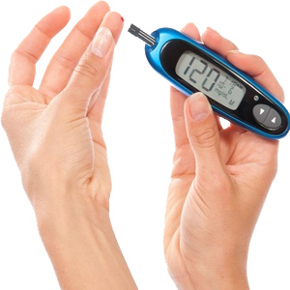 I, as a naturopath, always takes pride in my “walking the talk”. I eat a mostly vegetarian diet, with fish about two times a week. I eat lots of fresh vegetables and fruits. I drink water only. I eat sweets no more than once a month. And I exercise a few times a week, with running and yoga. I maintain a normal and stable weight as well.
I, as a naturopath, always takes pride in my “walking the talk”. I eat a mostly vegetarian diet, with fish about two times a week. I eat lots of fresh vegetables and fruits. I drink water only. I eat sweets no more than once a month. And I exercise a few times a week, with running and yoga. I maintain a normal and stable weight as well.
My annual lab work always looks good, especially the lipid panel. There was one test that was never included in my lab work – hemoglobin A1C. Hemoglobin A1C, or HbA1C, is an indicator of average blood sugar level over the past three months. The normal range is between 4% and 5.6%. Since my fasting blood sugar has always been normal, and I have no family history of diabetes, I never even thought that it was necessary to check my own HbA1C.
One afternoon in May 2015, I was feeling hungry. It was just about two hours after lunch. I thought maybe my blood sugar was too low. So I checked with the glucometer. Shockingly, my blood sugar, two hours after a meal, was 155! Two days later I repeated the test, after calibrating the glucometer to make sure it functions correctly. Again it was over 150. At that point, I was convinced that I have an impaired glucose tolerance. I took myself to the lab and ordered HbA1C. I was not too surprised this time to see that my level was 5.9%, above the normal upper limit of 5.6%.
Time for action I thought. First thing I did was analyzing my diet. Yes I was eating a lot of carbohydrates in my diet, because it was a mostly vegetarian diet. There was no refined sugar, but there were grains, corns, and tubers, and I was probably eating a little too much of them. There were many times when I didn’t have enough dinner leftover for next day’s lunch, I would just pack a bowl of taro root (almost pure starch) or corn with rice. I decided to take out the grains and tubers (sweet potatoes, potatoes, and taro roots) entirely from dinner, and cut them back by at least 50% at lunch. I also modified my fruit consumption, by portion control and focusing on fruits that are lower in sugar, such as berries and certain apples. I added more fish and vegetarian source of fat, such as avocado, to my diet to ensure that I was getting enough calories.
I believed that there was a non-dietary factor that contributed to my rising blood sugar. And that was lack of sleep. I got into the habit of learning Spanish on iPad once I’m in bed and would easily end up browsing on Internet afterwards. So I had to change that as well. I wouldn’t allow iPad in my bedroom and would go to bed when I’m in bed. Sleep time is so precious as it is the time that the body repairs itself.
I followed this new routine for one month and took myself to lab again. Technically hemoglobin A1C should be checked every 3 months, and I admit I was anxious to see changes. I was not disappointed! My HbA1C went down to 5.2%.
What did I learn from this experience? A lot. But most importantly I learned that there is no diet that is perfect for everyone. Diet needs to be modified depending on the body’s need, as our body is dynamic and it changes with our diet, with our environment, and with our stress level.
And by the way, my thyroid function also improved after following the new diet and ensuring adequate sleep. That story will come soon. Stay tuned!